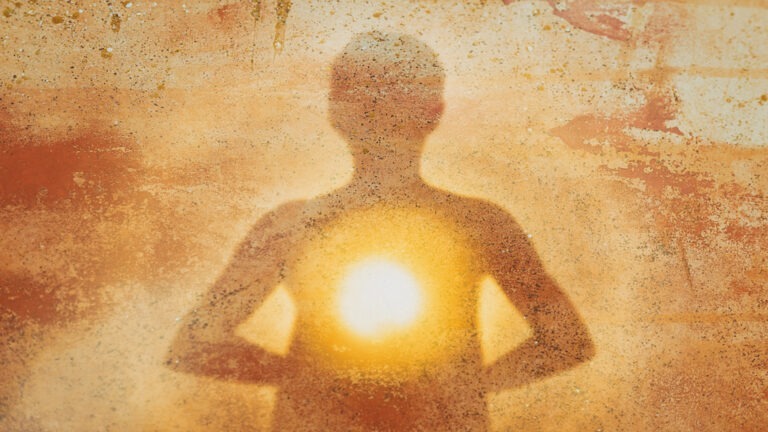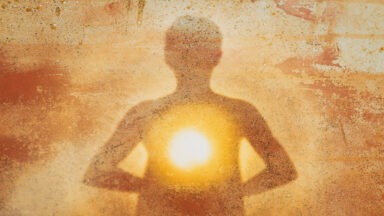How Reiki Symbols Can Change Your Life

Reiki is a spiritually guided life force energy used as a non-physical healing practice. Developed by Mikao Usui, Reiki is not a religion nor is it taught in the usual sense – rather it is transferred from the master to the student during an “attunement.” But don’t get too excited just yet – there’s still plenty to study.
Reiki With Intention
While in order to become a Reiki master one must live in a way that promotes harmony, Reiki is not dependent on one’s intellectual capacity or spiritual development. In fact, you don’t even have to believe in Reiki in order for it to work. However, the intention behind the practitioner is what gives the practice its strength and therefore must be cultivated.
Five Reiki Symbols to Open Your Mind
To help with this harmonious cultivation, five Reiki symbols were developed as teaching tools for students and are meant to be keys that open the door to a higher mind. These symbols may seem mysterious and somewhat intimidating at first, but they’re actually very easy to grasp. The Reiki symbols are based on the Japanese writing system, Kanji and should be drawn or visualized as taught during the Reiki 2 Attunement. By visualizing these symbols, the user is quickly connected to the universal life force and all negative predispositions are overridden.
In the old Reiki tradition, it was believed that these symbols are holy and must be divulged only to those who are initiated at the Reiki 2 level. As Reiki becomes more popular and widespread, there are multiple variations of these symbols. However, this is cause for little concern as the true power in Reiki symbols lies in their intention.
Here are the five Reiki symbols you should know if you’re ready to take your spiritual journey to the next level.
The Power Reiki Symbol
Japanese Name: Cho Ku Rei
Intention: Light Switch
Purposes: Manifestation, Increased Power, accelerated healing, healing catalyst, protection
Cho Ku Rei, or the power symbol, generally means “Place the power of the universe here.” This symbol can be used at any time during a treatment but is especially effective at the beginning or end of a session. It is most often related to a light switch as its intention is to instantly boost your abilities.
The coil-like structure of this symbol is incredibly telling. The coil can expand and contract to regulate the “ki” energies and can also be used as a funnel of sorts to intensify and focus power or to decrease and release energy when used in reverse. The coil can also be used to close a space around the receiver or an area in order to block out negative energies and to keep energies received from leaving.
The Mental and Emotional Reiki Symbol
Japanese Name: Sei Hei Ki
Intention: Balance
Purposes: Improve memory, Emotional Healing, Mental Balance
Also known as the Harmony symbol, Sei Hei Ki (pronounced “Say-Hay-Key”) brings together the brain and the body. Generally translated to “God and man become one,” Sei Hei Ki releases deep-rooted emotional negativity from the body and into the universe. Making this symbol your ally is an investment that will repay you over the course of your life. Sei Hei Ki is “loyal friend,” especially whenever you are facing difficulties.
The Connection Reiki Symbol
Japanese Name: Hon Sha Ze Sho Nen
Intention: Timelessness
Purposes: Distant healing, past/present/future, healing karma, spiritual connection
Also known as the “Distance Symbol,” Hon Sha Ze Sho Nen (pronounced “Hon-Sha-Zee-Show-Nen”) means “No past, no present, no future” and is to extend powers and send Reiki energies over a long distance. It symbolizes a shape shifter that can slip through time and space. However, do not focus its efforts on a specific problem – rather you must send its Energies Without Limitations and they will go where they are needed. Hon Sha Ze Sho Nen also gives access to the “Akashic Records,” or the life records of the soul. Because of this, it can be used to dispel trauma from past life experiences for deep karmic healing.
The Master Reiki Symbol
Japanese Name: Dai Ko Myo
Intention: Enlightenment
Purposes: Empowerment, soul healing, oneness
One of the most powerful symbols, Dai Ko Myo is only to be used by Reiki Masters as it combines the power of the first three symbols, Cho Ku Rei, Sei He Ki, and Hon Sha Ze Sho Nen. The symbol generally means “Great Enlightenment” or “Bright Shining Light.” It represents all that is Reiki and is believed to be the heart of Reiki. Though seldom used for any one specific purpose, this symbol instead enhances the healing effects of every form of Reiki and serves as a reminder that Reiki is love and available to everyone.
The Completion Reiki Symbol
Japanese Name: Raku
Intention: Grounding
Purposes: Kundalini Healing, hara connection, chakra alignment
The Raku symbol is the final symbol learned by Usui Reiki Masters and is used solely during the final stage of the Reiki attunement process to seal energy into the seven chakras. Its intention is to ground and seal the newly awakened Reiki energies. Also known as the “Fire Serpent,” the striking lightning bolt symbol is drawn downwards from the heavens to the earth and represents the life-force energy that runs down the spine, through our chakras. The origins of this symbol are less clear as it was not originally taught by Usui. Instead, it is speculated that Raku is an ancient Tibetan healing art of self-mastery and brought to the west by Arthur Robertson, a student of Reiki Master Iris Ishikuro.
Human Biofield Research Shows Efficacy in Energy Healing

Exciting new scientific research is finally showing the efficacy of an age-old practice: biofield healing.
Humans have been using various forms of energy healing for eons, today the emerging field of biofield medicine is ushering in serious scientific inquiry. Dr. Shamini Jain is a researcher and founder of the Consciousness and Healing Initiative, a collaborative of leading scientists and practitioners seeking to expand our understandings of biofield healing. She is the author of the new book “Healing Ourselves.”
“The biofield is a new term that’s been coined by Western scientists to explain what really is a very age-old concept that aligns across traditions around the world, and that is that the biofield is a set of fields, it’s a set of interpenetrating and interacting fields of energy and information that connect us and heal us,” Dr. Jain said.
“So we can talk about and explore the biofield of a cell, the biofield of a person, and even the biofield of a tree or the biofield of the Earth. What’s really cool about it, is we can look at the interactions between our biofields we can look at the biofields between cells, and we can look at the biofields between us and Earth. And it turns out when we start exploring those things in science, we learn about healing effects; we learn how our connection actually heals.”
Cyndi Dale is an energy healer and intuitive who has been working with the biofield’s subtle energies for decades.
“To me, energy is information that moves. Now, Einstein said it forever ago, ‘everything is energy,’ it’s just a matter of how measurable or immeasurable it is,” Dale said.
“So these days, we’ve subdivided those types of energy into subtle energy, which is 99.999 percent of an object or person, versus so-called ‘physical’ energy, which is really, simply denser energy. We’re increasingly being able to measure subtle energy which is really exciting. First of all, we’re explaining it in terms of quantum physics because subtle energy is really most like quanta, which are the smallest units, not just of matter, but of energy. So, therefore some of these quantum wave particles can move faster than the speed of light, but they all carry information or data.”
Biofield healing can take various forms of working with energy, these include reiki, acupuncture, healing touch, and pranic healing, amongst others. Scientists are now looking at ways in which this healing might work, right down to the cellular level.
“We’re bio-electromagnetic beings, even our bones are piezoelectric, and our cells give off charge,” Dr. Jain said. “As it turns out, we can actually even manipulate, for lack of a better term, work with the charge in our cells to grow new neural tissue. We have chemicals that run around in the body, but as it turns out in many cases, it’s actually the electromagnetic charge that might drive the chemicals to move from one cell to another. So as we begin to explore the biofield there’s so much to learn.”
While much still remains to be discovered about the exact mechanisms by which biofield healing works, emerging research is showing it does. Studies have shown the efficacy of biofield therapies in dramatically reversing fatigue in breast cancer survivors, improving immune function in patients receiving chemotherapy, and reducing PTSD symptoms in active-duty military.





































